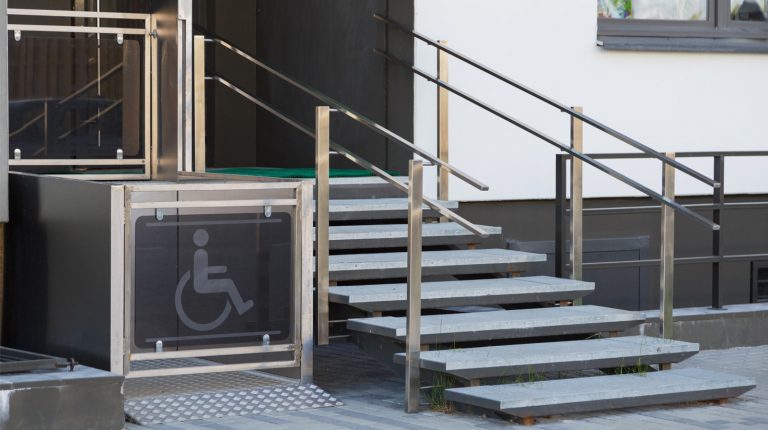These days, sustainable development is the talk of the town. While respect for the environment (energy, land, etc.) is one of the well-known and recognized criteria for sustainable development, others are less so. These include accessibility and adaptability. https://www.infogreen.lu/accessibilite-et-adaptabilite-sont-ils-des-criteres-de-developpement-durable.html#dossier-du-mois/article-14359
35% of the European population is disabled. The ageing of the population is also a reality. Yet to date, very few people with disabilities have access to education and/or employment. This form of discrimination can be found in other areas too. One of the main causes is the inaccessibility of buildings, roads and public facilities.
Apart from the obvious social stakes, we think less of the economic stakes involved. All these people have skills they cannot pass on to society. For how much longer will our society – the community – be able to pay the financial compensation required by this group of people who find themselves excluded from the job market? Wouldn’t it be more appropriate to think about solving the problems and avoiding all barriers linked to the accessibility of the built environment? Tourism is one of the few sectors, along with culture, to have already fully understood the challenges of infrastructure accessibility. Let’s hope that tomorrow, many other sectors will follow suit, like public transport, which is adapting to realities.
Access to housing through the front door
Another issue is the adaptability of housing. In addition to the fact that few ageing people wish to leave their homes to live in more institutional environments, few have the financial means to stay there. Already, the number of care facilities for the ageing population is inadequate, so what will happen tomorrow when the number increases even further?
Designing adaptable housing, capable of adapting to our changing needs (ageing, arrival and departure of children, diminishing financial resources…) is a matter of course that is still too often theoretical and too rarely implemented. This is another aspect of access to housing, which should be possible through the front door.
This section covers just a tiny fraction of the issues involved in building accessible infrastructures and adaptable housing, which are all part and parcel of sustainable development.
But what are the obstacles to their implementation?
Prejudice
First and foremost, of course, there are fears about costs. And yet, many studies show that the extra costs associated with accessibility and adaptability are very low, and in some cases non-existent, when these criteria are taken into account right from the design stage. The real additional costs arise when these criteria are taken into account at a later stage, and can vary greatly in scale. Another obstacle stems from prejudices about aesthetics. However, accessibility or adaptability integrated into a project from the outset is often invisible. Once again, it’s when these criteria are taken into account at a later stage that stigmatizing responses can arise… But if designers can usually find the most creative solutions within the various constraints of a project, why shouldn’t the same apply to accessibility and adaptability?
Nadia Maniquet, architect, accessibility expert
Infogreen partner

